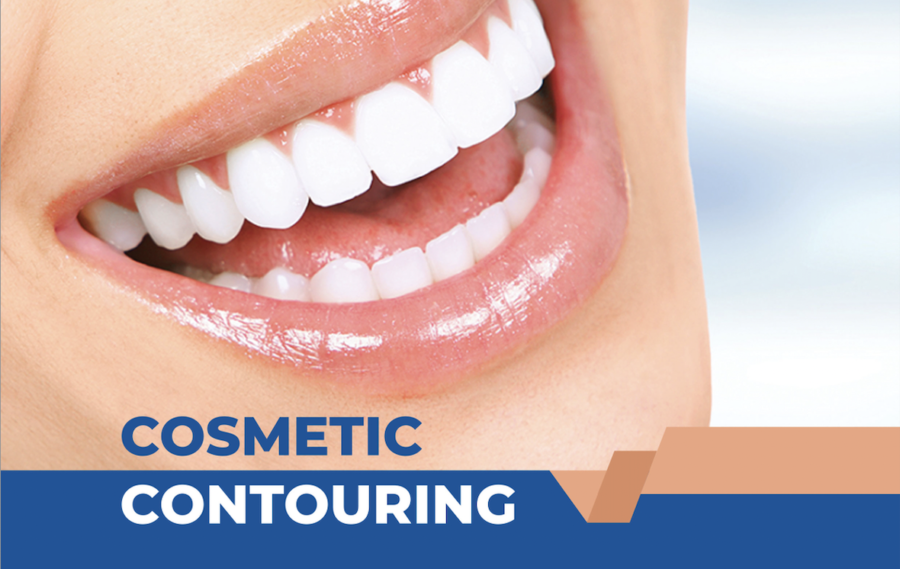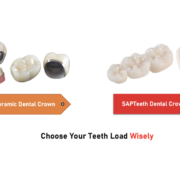Cosmetic dentistry is an umbrella term for all the services and procedures that go beyond standard dental care. From veneers to Zoom! teeth whitening, cosmetic dentists offer a wide variety of services to help you get the smile you’ve always wanted. Reducing the visibility of surface imperfections on your teeth is easier than ever before with modern advances in cosmetic dentistry. Whether you have crooked, discoloured, misaligned, or heavily stained teeth, there’s almost certainly a simple and affordable solution available. Bonding your teeth may be just what you need to enhance your smile and boost your confidence. Keep reading for a brief introduction to this type of cosmetic dentistry as well as its pros and cons.
How is Cosmetic Tooth Bonding done?
Bonding is a type of cosmetic dentistry that uses a composite resin material to fill in surface irregularities on your teeth. This can make your teeth appear straighter, whiter, and more uniform. Bonded teeth may also be more resistant to tooth decay and gum disease. Most bonding procedures are completed in one visit Bonding is also sometimes referred to as tooth lamination or tooth bonding. It’s important to keep in mind that tooth bonding is different from dental bonding, which refers to placing metal fillings.

Bonding is among the easiest and least expensive of cosmetic dental procedures. The composite resin used in bonding can be shaped and polished to match the surrounding teeth. Most often, bonding is used for cosmetic purposes to improve the appearance of a discolored or chipped tooth.
How does Cosmetic Tooth bonding work?
Bonding is a type of cosmetic dentistry that uses a composite resin material to fill in surface irregularities on your teeth. This can make your teeth appear straighter, whiter, and more uniform. Bonded teeth may also be more resistant to tooth decay and gum disease.
Most bonding procedures are completed in one visit. Bonding is also sometimes referred to as tooth lamination or tooth bonding. It’s important to keep in mind that tooth bonding is different from dental bonding, which refers to placing metal fillings.
When should you have it done?
Bonding is a low-risk procedure that’s perfect for most people. However, it’s important to note that it’s not right for everyone. For example, bonding isn’t recommended for people with gum disease. The procedure requires the dentist to apply a cement-like material directly to the gums. This can cause bacteria to build up and further worsen gum disease. Bonding may not be a good option for those with sensitive teeth either.

While bonding can help fix some dental issues, it can also cause other problems. For example, some people find that the resin used in bonding irritates their gums. This can cause gingivitis and lead to other dental health issues. ooth bonding is a quick and simple cosmetic procedure, in which your dentist repairs damage by attaching a composite resin to your existing tooth. The dentist shapes the resin and hardens it with a UV light. Once it’s hardened, the resin will stick to your tooth and cover the damage.
How long does cosmetic bonding on teeth last?
Bonding on the front teeth can last between 4 and 8 years, depending on the location of the bonded tooth, your bite, and your eating habits. It’s usually better to avoid biting directly into your food, particularly hard consumables that can compromise the structure of the dental bonding.
Tooth Bonding Benefits
Straighter teeth: Like many cosmetic dentistry procedures, bonding can be used to correct misaligned teeth. This can make your smile look more uniform, balanced, and attractive.
Whiter teeth: Bonding can also be used to reduce discolouration in teeth. This can make teeth look brighter and add more shine to your smile.
Minimally invasive. While porcelain veneers and dental crowns require significant tooth alteration, dental bonding typically doesn’t require enamel removal.
Cost-effective. Dental bonding is one of the least expensive cosmetic dental procedures available.
Clearer braces: Some people wear braces for years as they slowly reshape their teeth. Bonding can be used to cover up the metal used in braces. This can significantly reduce the visibility of your braces.
Versatile. Dental bonding can conceal a wide range of cosmetic imperfections, including chips, cracks, gaps and discoloration.
Fast and convenient. Other cosmetic procedures, like veneers and crowns, require multiple appointments. Dental bonding can be completed in just one office visit.
Disadvantages of Cosmetic bonding
Long-term tooth sensitivity: Like all restorative dental procedures, bonding can cause tooth sensitivity in some people. This happens when the bonding material touches your gums and causes gingivitis. While most people can get rid of this sensitivity by using special toothpaste, others may need to have the bonding removed. This can be a bit expensive but is usually still cheaper than getting traditional dental braces.

Wearing away the tooth: Another disadvantage of bonding is that the resin can wear away the tooth itself over time. This can cause the tooth to become weak and more likely to break. This is less common if you choose a dentist who uses a resin-based material that’s stronger and longer-lasting than standard bonding materials.
Immediately after a dental bonding treatment, there are a few things to keep in mind. Our dentists at Royal Dental Clinics recommend that you avoid foods, drinks, and other substances that will stain or otherwise affect the setting and appearance of the composite resin. In the 48 hours following the treatment, the composite is susceptible to staining, so it’s important to avoid consuming things that may stain the composite.
Key Takeaway
Bonding is a quick and simple way to enhance your smile. This procedure can be used to fix a variety of dental issues, including discolouration and misaligned teeth. While bonding isn’t right for everyone, it can be a great option for many people who want to enhance their smile. But it’s important to note that bonding doesn’t completely replace more complex procedures like getting braces or replacing existing fillings. For example, bonding won’t fix an extremely badly decayed tooth that would need to be removed and replaced with a dental implant.






